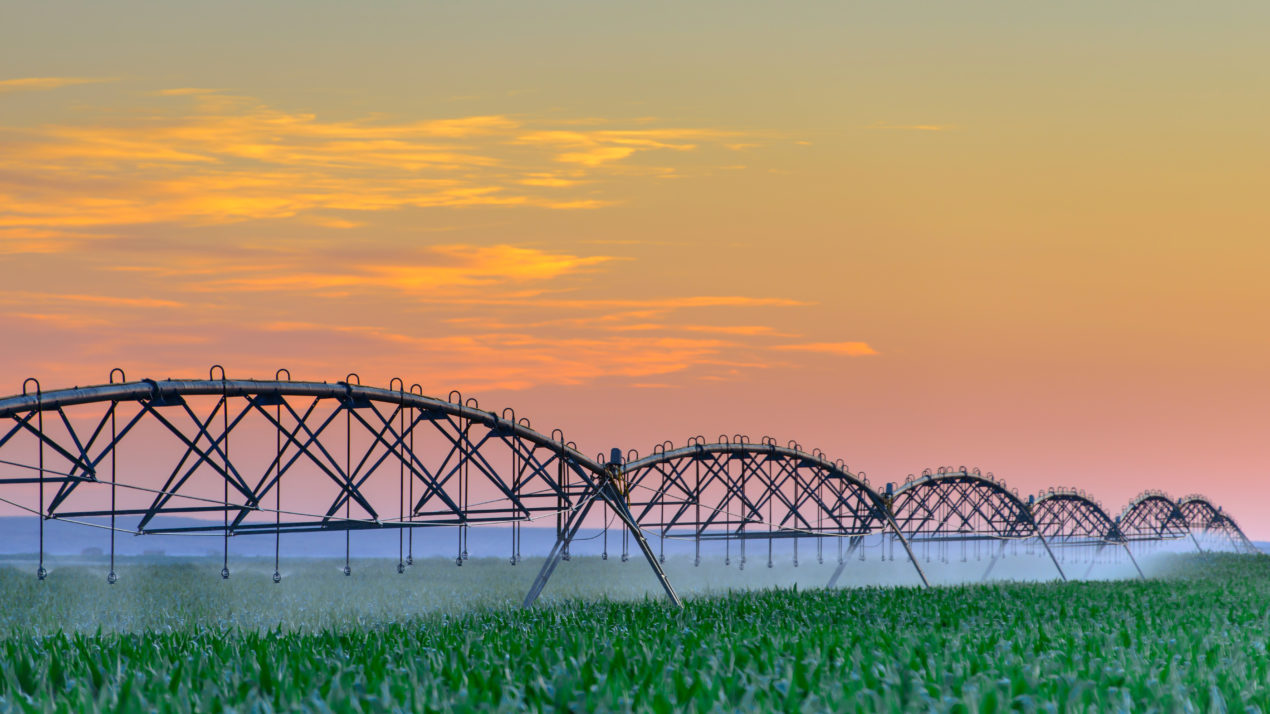
Thank goodness for the rain across much of the state this weekend, but until then the weather has continued to be hot and dry. We see that the continual dry weather over time has depleted the topsoil and subsoil moisture in many areas. For many that have the ability, irrigation is the answer when moisture levels become too low. Scott Polzin, of North Central Irrigation in Plainfield, Wisconsin, shared where irrigation has been needed most, the technology that goes into irrigation and some of the other struggles that the industry is facing right now.
The central sands area of Wisconsin has been irrigating for about two and a half months, which isn’t too out of the ordinary. However, some other areas of Wisconsin have been irrigating for at least a month, which is not normal really at all. Different types of soil have different moisture retention abilities, but we continue to see this year that even the heavier soils are losing becoming depleted. Polzin also says that “when we’re in the 90 degree heat, day after day, there’s not much you can do. Even enough water doesn’t help, it stresses the plants to a point where they start to affect what their yield is going to be.”
Accurately monitoring how much moisture is in the soil can help to manage what amount of water needs to be irrigated to help the plants. Evapotranspiration (ET) rates can be obtained from a university or your own weather station, and watching them on a daily basis compared with the growth of your crops can help to determine how much water the plants are using each day. Soil probes can also directly measure the amount of moisture in the soil. Once you know how much water is actually needed, the irrigation systems can be used most effectively without over or under using water.
When it comes to technology, each irrigation system is unique. Each system has their own sprinkler package designed for the amount of pressure that is delivered from the well. This helps to ensure a proper amount of water is uniformly distributed across the field. Maintaining those packages and wells help to keep the system up and going. These systems can also utilize irrigation scheduling programs, that along with data collected from soil probes, rain collectors and other methods of data measuring can help determine when and how much irrigation needs to take place. Many of these systems also have remote control devices to turn them on or off, or schedule these irrigation times.
Irrigation companies, like many other companies, have recently also been facing challenges within their supply chains. Their biggest hurdle right now is obtaining parts to keep these systems maintained. “Electronic components, tires, anything with resins, plastic gaskets, anything with rubber. The raw materials have been hard to get and we’re starting to run out of those products,” said Polzin. He mentioned that they are having a very busy year with irrigation systems up and running more than usual, and that doesn’t look to be ending anytime soon.

